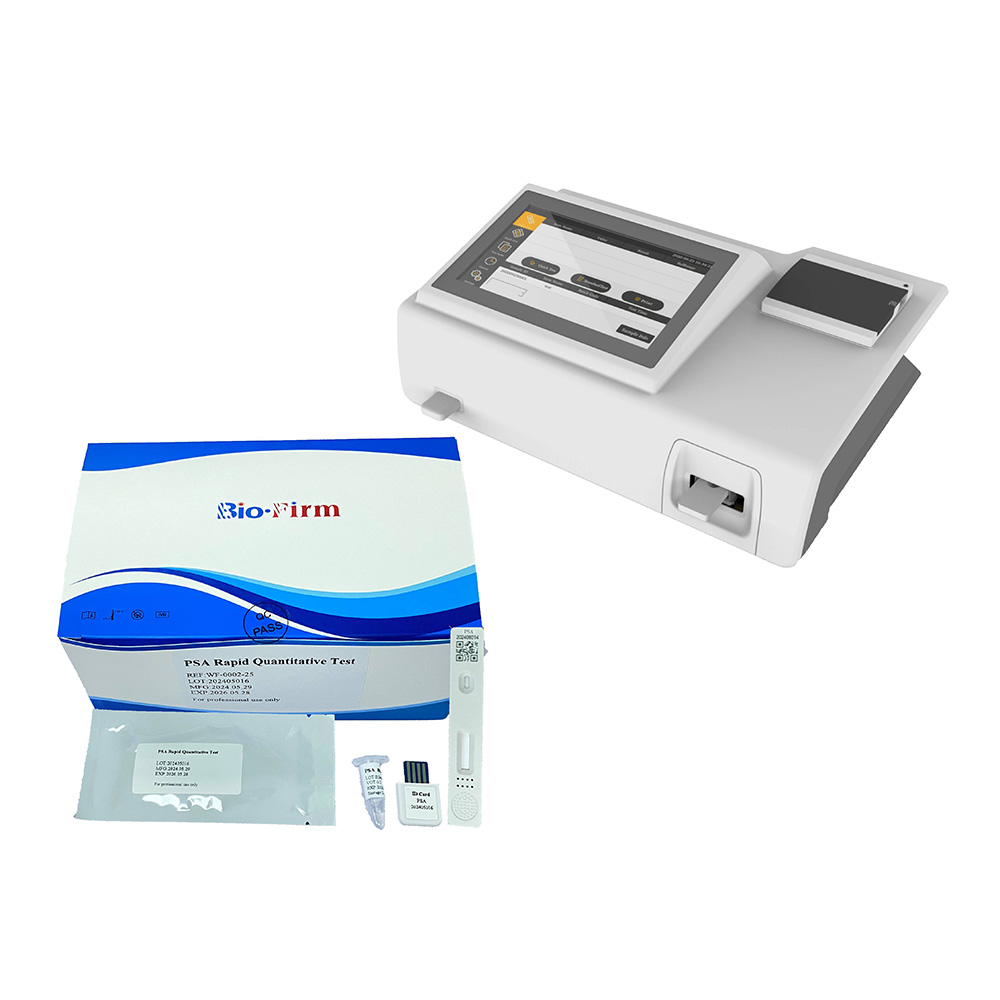Jul 01,2022
Fluorescence immunoassays can be effectively adapted for high-throughput screening in research and diagnostics through several key strategies:
Automated Systems: High-throughput screening often relies on automation to handle large volumes of samples efficiently. Automated systems equipped with fluorescence detection modules can process numerous samples simultaneously, perform data acquisition, and analyze results with minimal manual intervention.
Multiwell Plates: Fluorescence immunoassays test are commonly adapted to multiwell plate formats, such as 96-well, 384-well, or even 1536-well plates. These plates allow for the simultaneous analysis of many samples or conditions in parallel, increasing throughput and efficiency.
Fluorescent Label Optimization: The use of multiplexing with multiple fluorescent dyes or labels allows for the simultaneous detection of different targets within the same sample. This multiplexing capability enhances throughput by enabling the analysis of multiple analytes in a single assay, reducing the need for separate tests.
Miniaturization: Reducing the volume of reagents and samples through miniaturization techniques can help increase the number of samples processed per assay. Microfluidic devices and lab-on-a-chip technologies are examples of miniaturization that facilitate high-throughput screening by reducing reagent consumption and sample size.

Data Integration and Analysis: High-throughput screening generates large amounts of data that require efficient analysis. Advanced software and data analysis tools are used to handle and interpret the data, providing quantitative results and facilitating the identification of patterns or anomalies.
High-Speed Detection: Modern fluorescence detection systems are designed for high-speed readouts, allowing for rapid measurement of fluorescence signals. This capability is essential for processing large numbers of samples quickly and accurately.
Quality Control and Standardization: Implementing rigorous quality control measures and standardizing protocols ensures the reliability and consistency of results in high-throughput screening. This includes calibrating instruments, validating assay performance, and using appropriate controls.
Integration with Other Technologies: Fluorescence immunoassays can be combined with other high-throughput technologies, such as bead-based assays or flow cytometry, to enhance their capabilities and increase throughput. This integration allows for more comprehensive analysis and a broader range of applications.
By leveraging these strategies, fluorescence immunoassays can be adapted to meet the demands of high-throughput screening, making them valuable tools for large-scale research and diagnostic applications.



 Español
Español
 Français
Français
 Deutsch
Deutsch
 عربى
عربى








